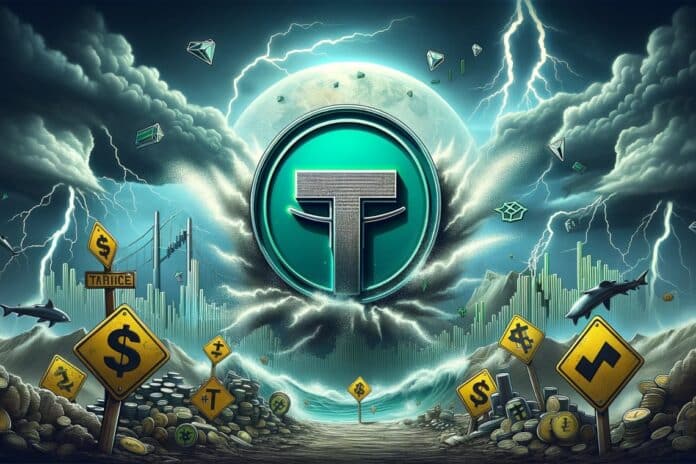According to JPMorgan Chase & Co., the expansion of USDT (Tether) market share among stablecoins would be a risk for the cryptocurrency market.
It was written in a recent report distributed last Thursday.
USDT is now close to surpassing the market capitalization of 100 billion dollars for the first time in history for a single stablecoin, and it is now an integral part of the crypto markets, serving as a less volatile alternative for traders who want to exchange digital assets and store their wealth.
Summary
JPMorgan’s concerns about the dominance of stablecoin Tether (USDT)
The JPMorgan report argues that the growing expansion of USDT in the last two years has indeed allowed Tether to consolidate its role as a leader in the specific stablecoin sector, but in the face of a lack of regulatory compliance and transparency.
In the report, JPMorgan analysts write that stablecoin issuers that are more aligned with existing regulations will likely benefit from an imminent regulatory crackdown on stablecoins and gain market share.
The hypothesis is that stablecoins could soon be subject to increased regulation, both in the United States and in Europe, where partial implementation of MiCA will begin in June.
The reference seems to be to USDC, behind which is indirectly Coinbase, and PYUSD, behind which is PayPal.
Therefore, we are not talking about current risks but rather future risks, although in the medium-short term. It should not be forgotten that JPMorgan itself has created a kind of stablecoin called JPM Coin, but it is only used on their systems.
It should also be noted that according to JPMorgan analysts, the possible listing of Circle, the issuer of USDC, suggests the company’s intention to expand internationally outside of the USA and to proactively prepare for upcoming new regulations on stablecoins.
USDT and USDC
USD Coin (USDC) currently has a market capitalization of around 27 billion dollars, which is less than a third of the over 96 billion USDT (Tether).
The highest peak of USDC was reached in June 2022, after the failure of Celsius, when it almost reached 56 billion. At that time, USDT had dropped to less than 66 billion, so a takeover seemed possible in the near future.
And instead starting from January 2023, USDT has risen strongly, surpassing 70 billion in market capitalization already in February of last year.
Instead, USDC starting from July 2022 began a decline that only ended at the end of 2023, and intensified in March of last year due to the temporary loss of the peg with the dollar. Until today, it has not yet fully recovered from that blow, although it took only a few days to recover the peg. Just think that the current level is still lower than that of June 2023.
JPMorgan against the leading stablecoin: the dominance of Tether (USDT)
At this moment, the dominance of USDT in the cryptocurrency sector is almost 71%.
Currently, all the stablecoins in the world have a total market capitalization of about 135 billion dollars, 96 of which are occupied by Tether.
And anyway, at the peak moment, in April 2022 even before the collapse of UST of Terra/Luna, the total market capitalization of stablecoins was less than 190 billion dollars, just over twice the current market capitalization of USDT.
If we add to this that USDT is also the oldest stablecoin in circulation, its dominance appears almost total.
The CEO of Tether, Paolo Ardoino, stated that such dominance can be negative for competitors, including those from the banking sector, but for now it has never been negative for the markets.
He also said that they have always worked closely with global regulatory bodies, and therefore should not have any regulatory issues.
They have also increased their level of transparency, to the point that the markets are rewarding them in the long run.
The future of the industry
Although the risks raised by JPMorgan are to be considered realistic, at this moment it seems a bit unlikely that any other stablecoin will be able to displace USDT in the medium-short term.
On the contrary, the one that was supposed to be its great contender, USDC, last year proved to be actually weaker, probably due to less experience in managing a similar project.
USDT has been around since 2015, while USDC entered the crypto markets three years later.
However, over the long term, JPMorgan’s objections could become more significant, precisely because behind USDC or PYUSD, there are publicly traded American companies, and therefore better alignable with US regulations.
However, it must also be said that in the crypto markets, adherence to regulations by stablecoins may not be of much interest, especially when it comes to decentralized exchanges.




